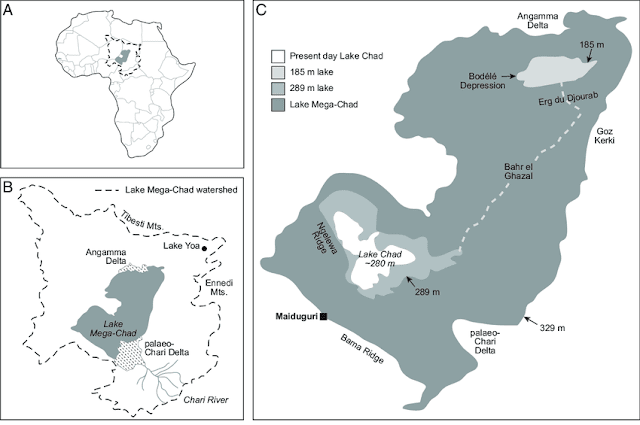Water, Africa and environmental change in the Lake Chad region
Hi, my name is Eilish and I’m a third-year student studying Geography at UCL. As part of my degree I am taking a module called ‘Water and development in Africa’. This blog will focus on the relationship between water and environmental change with a focus on the Lake Chad region in west-central Africa.
The Water Project suggests that without access to safe, clean water, many people will not be able to break out of the poverty cycle. The importance of studying water, especially in Africa, is that water scarcity threatens 2/3 of the continents population (this value was calculated by Falkenmark in 1989 so is likely to be greater now). Falkenmark defines as water scarcity as <1000m3/person/year. However, there is a conflict between what water metrics define as scarcity and how much water many people can access. In some sub-Saharan countries such as Ethiopia, Tanzania and Uganda, access is <25m3/person/year.
The Lake Chad region
I have chosen to focus on the Lake Chad region because when consulting the literature I found that there is a lot of literature focussed on environmental change in East Africa. Therefore, in order to move away from East Africa and research a region also experiencing environmental change and changes in water availability, I have chosen to focus on west-central Africa.
Lake Chad is a freshwater lake in the Sahelian zone of Africa (Figure 1). The Lake Chad basin spans 7 countries over nearly 8% of the African continent (Global Water Partnership 2011). Lake Chad also spans three climatic zones; the Sahara desert, the Sahel and the Sudan zones (Stache 2018). The climatic and cultural variability across the Lake Chad region makes it a very interesting case study.
Source: Buma et al. 2016
I aim to investigate how the changing climate has affected and continues to affect Lake Chad. Lake Chad lost over 90% of its water from 1963 to 2012 (Lemoalle et al. 2012). NASA research found that Lake Chad was at 5% of its previous size in 2004 and this percentage is undoubtedly even lower now. In response to these shocking figures, Sarah Stacke published an article in National Geographic last year which referred to Lake Chad as ‘Africa’s Vanishing Lake’. Figure 2 shows how the area of Lake Chad has changed from the 1950s to present.
My blog…
Over the course of this blog I plan to cover how and why the changing climate has affected Lake Chad and in addition, the influence of the ITCZ and El Niño and La Niña phases. Within this, I plan to look at longer-term historical changes in the basin including the ‘Lake Mega Chad’ phase. In contrast, I also plan to research the recent proposal of an inter-basin water transfer. In relation to this proposal, I also want to analyse how water-related issues in the Lake Chad region were assessed at COP21. Finally, I want to examine how the current situation in the Lake Chad basin could be applied to other regions of Africa in order to act upon the apparent water ‘crisis’.
Thanks for reading,
Eilish





Hi Eilish - love the blog - I'm not really big on physical Geography but this actually really engaged me with the small focus area helping me understand the physical processes in more locally specific contexts. But, are you going to be looking at anywhere else in the African continent to come to wider conclusions on African issues of environmental change? Thanks!
ReplyDeleteHi Elizabeth, I'm glad you're finding my blog accessible as someone without a physical geography background. I plan on expanding the focus of my blog in later posts so be sure to keep reading!
DeleteGreat - I look forward to it!
Delete